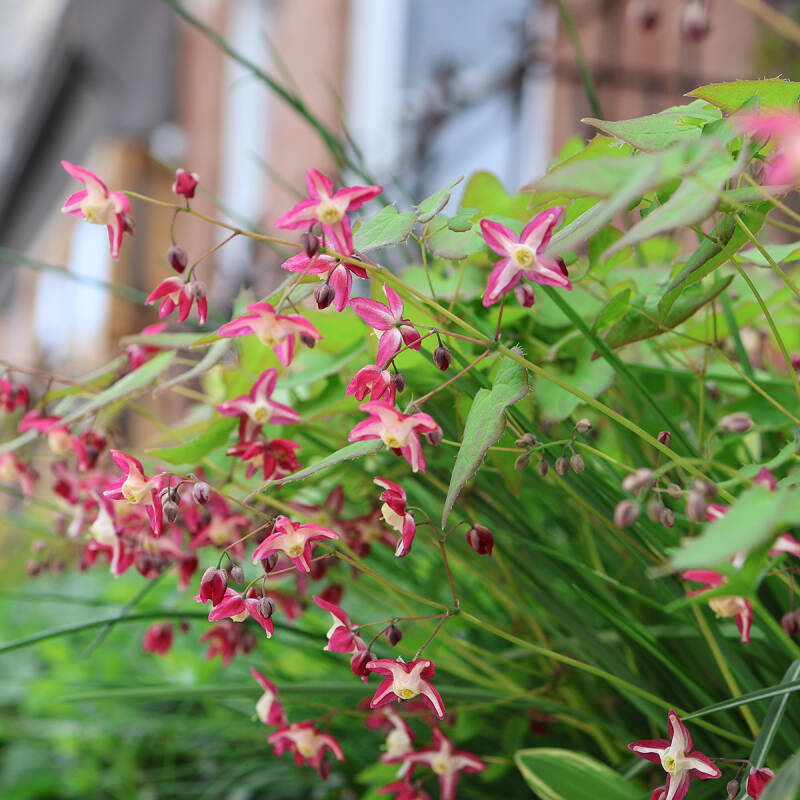Rabbit’s Foot Fern, Davallia fejeensis
Wandering around my local nursery the other day, I spotted this mysterious looking creature. Instantly I had to pet its fuzzy feet and marvel at the way it scrambled over the pot’s edges, almost hugging it for dear life. I read the label: Rabbit’s Foot fern. While I always cringe at the sight of those “lucky” rabbit foot key chains, this rabbit’s foot I could completely support and add to my home. And it turns out, this furry fern is also quite easy to grow.
Please keep reading to learn more about this fuzzy fern friend:

Its common name (plus a few others like Bear Paw fern and Squirrel fern) comes from the furry rhizomes growing on top of the soil that resemble a creature’s foot. The fern is native to Fiji and is epiphytic in nature—meaning it grows on trees or in rock crevices and takes moisture and nutrients from other sources besides soil.
A one-foot-high lush mound of lacy upright evergreen fronds rises from its dense cluster of rhizomes that creep over and hug the pot. While its furry feet may be fascinating for us to look at, they’re actually functional for the plant, because these rhizomes absorb and store moisture and nutrients as they clamber across moist soil.

In general, this fantastic looking fern is easy to grow and can take a bit of neglect. If one day it shows signs of browning at the tips, it’s probably due to lack of moisture in the soil or low humidity. To remedy this, try misting your plant every few days with water to moisten the surface rhizomes. Also, this plant appreciates the occasional trip to the shower where it can get a thorough soaking. In fact, most tropical houseplants appreciate a “spa day,” because a shower removes any dirt and dust and washes off any pests. Just make sure your plant has drained properly before returning it to its home.
Cheat Sheet

- Grow this fern in a hanging basket to show off the intriguing rhizomes.
- It also grows well in shallow pots, as the majority of the growth is above the soil.
- This plant looks lovely when added to a fern collection, greenhouse, or as a specimen indoor plant.
- Surprisingly sensitive to salt, insecticides, scented candles, and tobacco smoke.
- Safe around pets and children.
Keep It Alive

- This fern appreciates a warm spot with strong, indirect light and the temperature to hover between 60 and 75 degrees F.
- Can grow outdoors and survive in USDA Zones 10 to 12 but in a shady spot.
- Avoid burying the rhizomes as this can lead to rot.
- Water this fern enough to keep the soil moist during the spring and summer, and then you can reduce the watering a bit in the slower, winter months.
- Re-pot every two years or so in the spring when the roots have consumed all the potting soil.
- A medium feeder, this plant likes some food (mixed at half strength) about every two weeks during spring thru fall.
- Lightly prune your plant in later winter to remove any dead or diseased fronds.
For more hanging plants, see:
- Gardening 101: Staghorn Fern
- Garden Visit: A Hanging Orchid Garden in San Isidro, Buenos Aires
- Gardening 101: Ric Rac Cactus












Have a Question or Comment About This Post?
Join the conversation (0)